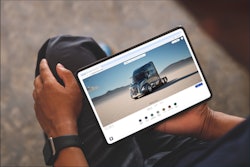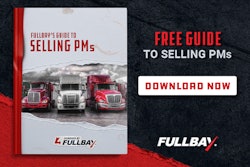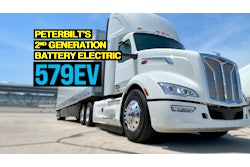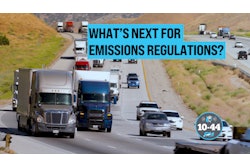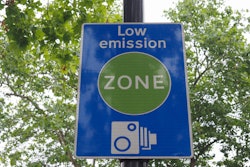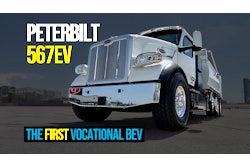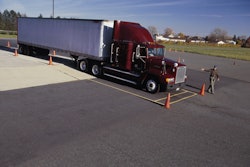
The recent ACT Expo seemed primed for creating a drinking game, one where everyone drinks a shot every time someone says, “We’re not letting perfect get in the way of good.”
I lost count of how many times industry speakers expressed this sentiment. Catch phrases from past years included “chicken and egg” — thankfully I only heard that once this year. Apparently, this year there are enough commercial truck chickens and eggs to make that phrase less relevant.
The good enough message makes complete sense. Today we have to go with today’s technology.
But we can’t just stop at that.
Continuous improvement requires accepting that perfection is a journey not a destination.
The challenge is making sure accepting the good doesn’t stifle recognizing that “good enough” rarely is ever good enough. I was very pleased to hear Kenworth express that exact sentiment in a mainstage video on day three of ACT Expo.
As consumers of freight equipment, when has good enough ever stopped fleets and shippers from asking for better?
A stark example is the Chesapeake Bay Bridge. Those ship collision barriers were probably good enough but we recognize now, after the catastrophe, they needed to be better.
A frequent example of good enough thinking cited by many speakers is that current diesel trucks emit so much less pollution than the emissions from one 1970s trucks. I recall the trucks of the 1970s and 1980s were often seen with black smoke coming out their dual exhaust stacks. At NACFE, we have frequently called out media and researchers for misrepresenting current diesel trucks by showing black sooty exhaust. Smoke is gone from newer trucks.
One reputable diesel industry information source shows a 1974 semi produced 61% more carbon monoxide than a 2025 one. A 1984 one produced 99.5% more NOx than will a 2025 truck. The thing is, there were voices in 1974 and 1984 arguing that the current emissions levels were good enough.
The word “emissions” became well used in the 1970s. Google’s Ngram Viewer is a tool that trends word usage in books. Figure 1 highlights the increased occurrences of the word “emissions” in printed documents.
 Occurrences of the printed word “emissions” in books over time (Google)
Occurrences of the printed word “emissions” in books over time (Google)
In the 1970s, vehicle emissions were not good enough. Emissions for cars and then trucks eventually began improving through regulations often tied to fuel economy improvements. NACFE and others often point out that using less fuel per mile inherently means less emissions and lower operating costs.
Lowering operating cost is a goal of every business, every day. Many also now have emission reduction goals.
Good should not be an excuse. A rotary dial phone was good once, now it’s archaic. What if telephony technology had stopped at the touch tone push button Bell System phone in 1963? Where would we be today without smart phones?
ACT Expo presenters invoked the example of Moore’s Law almost in lock step with saying they were not letting perfect get in the way of good.
What a contradiction of visions. Moore’s Law is the recognition that computer processors double in capacity every few years. That doubling of computing capacity requires continuous improvement, heavy investment in research and development, recognition that today’s great smart phone or computer needs to be better and will be obsolete in a few months or years. Moore’s Law clearly says good enough is never good enough.
ACT Expo provides visions of where commercial fleet operations may go, while grounding us in the technological realities of where we are today. ACT Expo has been around long enough that some technologies have been spotlighted, then discounted, and then spotlighted again — like rediscovering and reinventing a rock star a decade after a number one album. Innovation is unpredictable.
Heading into the Anaheim Convention Center, I was struck by the staging of the natural gas day cab in the courtyard (Figure 2). It reminded me of the lobby of the Jurassic Park movie welcome center with its prominent T-Rex dinosaur roaring as the banner “When Dinosaurs Ruled The Earth” fluttered to the ground at the end of the movie. Will the new Cummins X15N natural gas engine running renewable natural gas become the apex commercial Class 8 truck?
 ACT Expo Anaheim Convention Center courtyard NACFE
ACT Expo Anaheim Convention Center courtyard NACFE
I remember a previous ACT Expo where the 9L and 12L natural gas ICE engines dominated media coverage, only to be pushed into the background by battery electric vehicles a few years later, and then hydrogen ones. Predicting the future is hard, but consistently, evidence from annual ACT Expos is that good enough has not been good enough.
When Jim Walenczak, Kenworth’s general manager, stepped up on the main stage on the third day of the show, he strongly emphasized that “getting the world’s best” is critical to commercial freight operators.
His keynote address included strong reinforcement that "excellence is never an accident," "never settle,” and "good enough is not part of your vocabulary."
My hope is that trucking technology leaders stop reinforcing that good is better than perfect. I think we all want better. Dan Priestley, senior manager for the Tesla Semi, on Tuesday’s main stage stressed that “continuous improvement” was necessary.
Patti Poppe, CEO of PG&E, had one of the best quotes of ACT Expo. She said, “Someone has to have the tenacity to build the future.”
My hope is that freight industry executives revamp the narrative so many stated at this year’s ACT Expo. Yes, buying today’s technology today is an obvious reality, but the good is only a stepping stone to the better. Pursuing the better should be a daily goal for all of us. Emphasize continuous improvement. Recognize that perfection is a journey not a destination.
Make the narrative about requiring daily innovation and progress toward better solutions rather than becoming complacent with good enough solutions.
This industry never accepts good enough.

